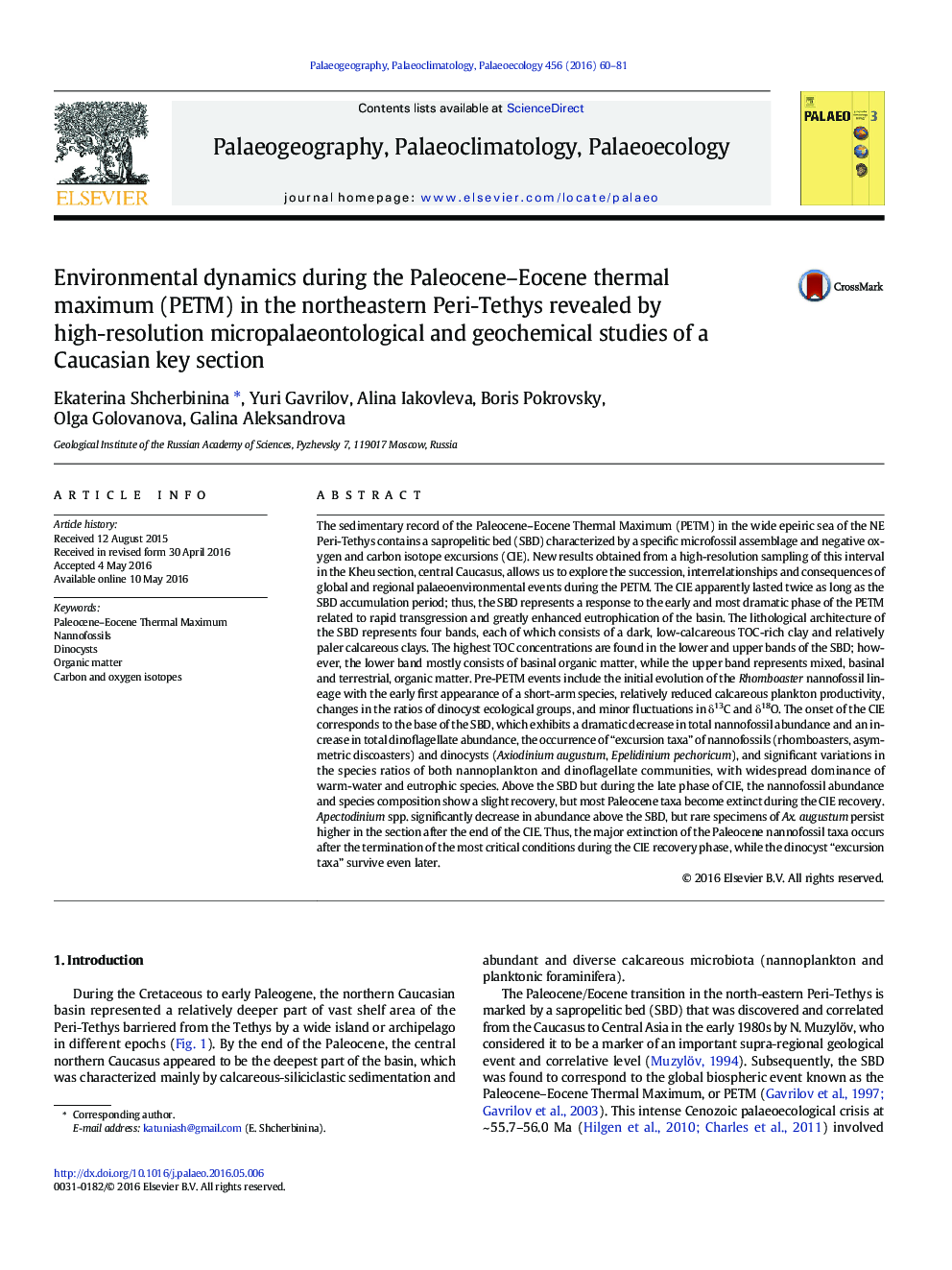| کد مقاله | کد نشریه | سال انتشار | مقاله انگلیسی | نسخه تمام متن |
|---|---|---|---|---|
| 4465680 | 1622135 | 2016 | 22 صفحه PDF | دانلود رایگان |

The sedimentary record of the Paleocene–Eocene Thermal Maximum (PETM) in the wide epeiric sea of the NE Peri-Tethys contains a sapropelitic bed (SBD) characterized by a specific microfossil assemblage and negative oxygen and carbon isotope excursions (CIE). New results obtained from a high-resolution sampling of this interval in the Kheu section, central Caucasus, allows us to explore the succession, interrelationships and consequences of global and regional palaeoenvironmental events during the PETM. The CIE apparently lasted twice as long as the SBD accumulation period; thus, the SBD represents a response to the early and most dramatic phase of the PETM related to rapid transgression and greatly enhanced eutrophication of the basin. The lithological architecture of the SBD represents four bands, each of which consists of a dark, low-calcareous TOC-rich clay and relatively paler calcareous clays. The highest TOC concentrations are found in the lower and upper bands of the SBD; however, the lower band mostly consists of basinal organic matter, while the upper band represents mixed, basinal and terrestrial, organic matter. Pre-PETM events include the initial evolution of the Rhomboaster nannofossil lineage with the early first appearance of a short-arm species, relatively reduced calcareous plankton productivity, changes in the ratios of dinocyst ecological groups, and minor fluctuations in δ13C and δ18O. The onset of the CIE corresponds to the base of the SBD, which exhibits a dramatic decrease in total nannofossil abundance and an increase in total dinoflagellate abundance, the occurrence of “excursion taxa” of nannofossils (rhomboasters, asymmetric discoasters) and dinocysts (Axiodinium augustum, Epelidinium pechoricum), and significant variations in the species ratios of both nannoplankton and dinoflagellate communities, with widespread dominance of warm-water and eutrophic species. Above the SBD but during the late phase of CIE, the nannofossil abundance and species composition show a slight recovery, but most Paleocene taxa become extinct during the CIE recovery. Apectodinium spp. significantly decrease in abundance above the SBD, but rare specimens of Ax. augustum persist higher in the section after the end of the CIE. Thus, the major extinction of the Paleocene nannofossil taxa occurs after the termination of the most critical conditions during the CIE recovery phase, while the dinocyst “excursion taxa” survive even later.
Journal: Palaeogeography, Palaeoclimatology, Palaeoecology - Volume 456, 15 August 2016, Pages 60–81